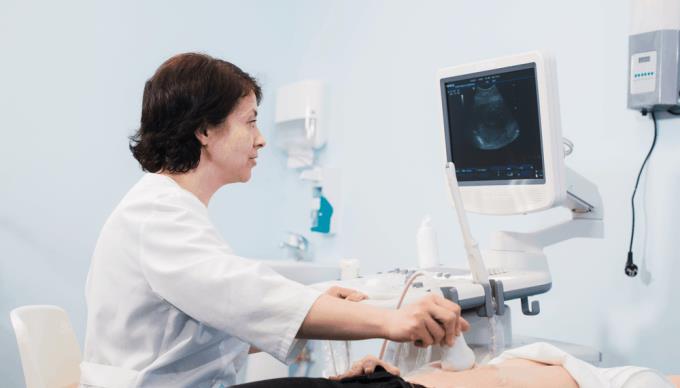Amniocentesis is an unusual condition in the amniotic sac, but little is known and can cause serious birth defects in the fetus.
The amniotic sac is a thin but sturdy membrane that surrounds the baby and develops inside the womb of your baby at the same time. It functions like a home, allowing the embryo to grow and not be disturbed by external forces thanks to the amniotic fluid inside. On the other hand, a condition called amniotic fluid syndrome puts the fetus in danger and can leave defects later on.
What is amniotic strip syndrome?
The amniotic sac is a protective wall for your baby, but there are still a few times that make this area dangerous. This is due to the presence of fibers in the sac that entangles the fetus and the condition is called amniotic fluid syndrome.
Another name for the amniotic strip syndrome
Some alternative names for this condition include:
Annular constriction
Amputation of the uterus
Body wall complex
Amputation of my limbs
Abnormal tissue strip
Deform of amniotic fluid
Amniotic bandage syndrome.
Is amniotic strip syndrome common?
The risk of getting amniotic strip syndrome is extremely rare with 1: 1,200 birth survival or 1: 15,000. When there are no genetic factors, the chance of a pregnant mother having this condition is quite low.
The cause of the amniotic strip syndrome

Some of the causes that cause this condition to appear include:
External theory
This is a widely available theory to explain the appearance of amniotic sac strands. The amniotic sac consists of an outer and inner layer. Sometimes even though the outer layer is not damaged, the inner wall lining breaks and begins to float in the amniotic fluid. This creates a dangerous situation for the fetus as bands of the amniotic fluid can become entangled in the baby's body.
Intrinsic theory
On the other hand, the above theory does not explain all causes of the syndrome in cases of intact amniotic fluid. Intrinsic theory states that it is poor blood flow that causes defects in the amniotic sac.
Signs of amniotic strip syndrome
If you want to know if your baby has amniotic fluid syndrome, you can consider the following symptoms:
The extremities are not equal
Wrinkles on parts of your child's body such as the hands, feet or fingers
There is space on the head or torso
Swelling of different parts of the body caused by wrapped amniotic fluid.
Complications can occur
The effects of the amniotic strip syndrome vary from case to case. On the other hand, your baby is at risk for the following conditions:
Cleft lip
Wrinkled skin
Deformed nails
The limbs are of different lengths
Webbed fingers or toes
The newborn is born with amniotic fluid still entangled
The fingers or toes are bound together
A band of amniotic fluid is wrapped around the neck or umbilical cord, resulting in stillbirth
The amniotic strip can become entangled in one of the legs and restrict the baby's ability to move, causing the baby's legs to become crooked or even necrotic.
Diagnosis of the amniotic strip syndrome
A diagnosis of amniotic strip syndrome will be made around the third month of pregnancy via ultrasound. Sometimes the amniotic bands themselves appear normal, making it difficult for the doctor to detect the abnormality. In addition, your doctor may also use exclusion to look for any distortions related to the amniotic strip syndrome.
Treatment

The treatment of amniotic strip syndrome depends on a variety of factors such as the area affected, the degree of damage and the child's stability:
Birth defects in the legs: This condition can be improved by using a brace or bandage
Membrane finger: Surgery immediately after birth is the preferred option for those experiencing membrane fingers
Lack of limbs: A prosthetic limb can be used in cases where infants lose a large portion of their legs or arms.
Managing the amniotic strip syndrome during pregnancy
If your doctor has identified the presence of amniotic fluid syndrome, the condition should be closely monitored. If they do not touch the fetus, no intervention is needed. However, if the amniotic bands are life-threatening or can cause birth defects, pregnant women should undergo laparoscopic surgery.
This procedure involves making a small incision in the abdomen and then placing a probe with a small camera to look inside the amniotic sac. Next, the doctor will use a laser to cut entangled amniotic fibers in order to reduce the impact and enhance the healthy development of the fetus.
Note for pregnant mothers
Due to possible complications, here are some precautions that must be taken if there is a risk of amniocentesis:
Caesarean section is an indicated method of delivery to avoid possible adverse events
Some hospitals may not be equipped with the facilities needed to take care of the postnatal needs of a baby with this syndrome. For example, an infant must have surgery within three days of birth to remove the amniotic bands. Therefore, you should find out which medical facilities are qualified to take care of your child's health in the most complete way
Pregnant mothers should not urge premature birth when the fetus encounters the amniotic band syndrome. This mode of delivery is only used when the strands become entangled in the fetus late in pregnancy and pose a negative risk to the health of the fetus.
In some cases, the amniotic strip syndrome can appear because the abdomen of the pregnant woman is affected. Therefore, see your doctor right away if you experience injury
Placenta biopsy (CVS) is a genetic diagnostic procedure that can help determine if your baby has a chromosomal abnormality or genetic disease. However, this remedy may be in a small proportion to increase the risk of developing amniotic fluid syndrome. Therefore, if your doctor recommends that you have a placenta biopsy, discuss the risk versus the benefits the biopsy has.
Getting informed that the fetus has amniotic fluid syndrome can cause confusion and fear in pregnant mothers. Once the situation is clearly understood, however, you can fully control it through continuous monitoring. Therefore, follow your doctor's advice to have a stable pregnancy.
You may be interested in the topic:
Is urine test during pregnancy necessary?
High uric acid index during pregnancy: Risks and prevention













